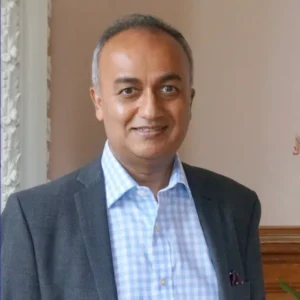
Medical Suitability
Before you can have any focal therapy treatment, our expert team will review your existing medical information, including your diagnosis details, medical history, mpMRI scan and biopsy results. This will help them determine if focal therapy is the best treatment for your prostate cancer.
Ideal patients for Focal Therapy
Ideal patients for Focal Therapy
- Low-Risk and Intermediate-Risk Prostate Cancer
Patients with a Gleason score of 6 or 7, with grade group 1 to 3 cancers (which indicates less aggressive cancer) are the best candidates. - Tumors Confined to the Prostate
The effectiveness of focal therapy depends on whether the cancer is restricted to one or a few distinct areas within the prostate. - PSA Levels Below a Certain Threshold
Candidates typically have a prostate-specific antigen (PSA) level of 20 ng/mL or lower. - No Evidence of Metastasis
Focal therapy is only suitable for patients whose cancer is localized and has not spread to lymph nodes, bones, or other distant areas. - Patients Seeking a Less Invasive Treatment
Men who prefer to avoid the potential side effects of surgery or whole-gland prostate radiation may find focal therapy a more attractive option.
Patients who may not be eligible
- High-Risk or Aggressive Tumors
Patients with Gleason scores of 8-10, with grade group 4 or 5 cancers, typically have more aggressive cancers that are more likely to recur. - Widespread Cancer in Multiple Extensive Areas of the Prostate
If cancer is spread outside the capsule of the prostate, focal therapy may leave untreated areas, leading to recurrence. - Very High PSA Levels
Patients with PSA levels significantly above 20 ng/mL are more likely to have extensive disease that cannot be effectively treated with focal therapy alone. - Men Who Want a Single Definitive Treatment
Some patients prefer a one-time treatment option that eliminates cancer with minimal risk of recurrence, and also accept the potential side effects of traditional treatment.
Which Focal Therapy is suitable for you?
HIFU
High-intensity focused ultrasound (HIFU) is one of two types of focal therapy we offer. It uses ultrasound waves to target cancer in the lower, or posterior, part of your prostate. HIFU is a non-invasive treatment that is guided by advanced 3D MRI imaging to destroy cancer cells while protecting healthy tissues.- Soundwave-based treatment
- Preserves urinary and sexual function
- Day procedure and rapid recovery
NanoKnife
NanoKnife is the other type of focal therapy we offer and uses electrical pulses to target the upper, or anterior, part of your prostate. Guided by 3D MRI imaging, NanoKnife is a minimally-invasive treatment that destroys cancer cells that may be hard to reach with HIFU.- Needle-based treatment
- Preserves urinary and sexual function
- Day procedure and rapid recovery
“Well, if you’re deemed suitable for the procedure, it really is a no-brainer.”
Brian Bishop
The Focal Therapy Clinic patient
Learn more about your medical suitability
Meet our World Leading Clinical Specialists
Questions to ask your doctor

It’s especially suitable if you want to avoid side effects like incontinence or erection problems, which are more common with surgery or radiotherapy. You should also be healthy enough to live at least 8–10 more years, and your MRI and biopsy should show a clearly targetable cancer spot.
Would you like to explore this further?
The team at the clinic has over 75 years of combined experience in urology, radiology, and oncology. They have treated over 2,000 patients and achieved excellent results, with 90% of men being free of clinically significant cancer one year after treatment.
The clinic uses advanced 3D MRI imaging for precision and has been a leader in focal therapy for over 20 years.
| Treatment | Cancer Control | Side Effects | Recovery Time |
|---|---|---|---|
| HIFU | Excellent (localised) | ✅ Lower risk | ✅ Few days |
| NanoKnife | Excellent (localised) | ✅ Lower risk | ✅ Few days |
| Surgery | >95% survival | ❌ Higher risk | ❌ Weeks/months |
| Radiotherapy | Excellent | ❌ Moderate risk | ❌ Weeks |
HIFU vs NanoKnife
- HIFU: Best for cancers in the back or middle of the prostate.
- NanoKnife: Ideal for cancers in the front or near nerves.
HIFU vs Surgery
- HIFU: Minimally invasive, fewer side effects.
- Surgery: Effective but higher risks of incontinence and erectile issues.
HIFU vs Radiotherapy
- HIFU: Focused only on the cancerous area.
- Radiotherapy: Treats the whole prostate, more side effects.
Because HIFU targets just the cancerous spot, healthy tissue is preserved. This makes repeated treatment safer than surgery or radiotherapy.
PSA tests, MRI scans, and sometimes biopsies help decide if more treatment is needed. If HIFU fails more than once, other options like NanoKnife, surgery, or radiotherapy are still available.
- 88% of men avoid further treatment for at least 5 years.
- 98% have no cancer spread.
- 99% are still alive overall.
- Even better results for Gleason 6 or 7 cancers.
Potential Side Effects:
- Urinary control: Only 2% need a pad temporarily.
- Erections: Over 90% maintain erections.
- Other risks: About 8.5% may get mild urinary infections.
HIFU is ideal if you want to avoid long-term side effects from surgery or radiotherapy.
Would you like to explore how HIFU compares to other treatments or discuss follow-up care?
Follow-Up Schedule:
1. PSA tests every 3 months in the first year.
2. MRI scan at 12 months.
3. Biopsy only if MRI shows something concerning.
4. Regular checks for urinary and sexual health.
This schedule helps detect issues early and manage side effects effectively.
Would you like to know what to expect during each follow-up?
Frequently asked questions
- MRI Scan: Provides a detailed image of the prostate to locate cancer spots accurately.
- Biopsy: A small sample of prostate tissue is taken, often guided by MRI, to confirm the cancer's presence and grade.
- PSA Test: Measures prostate-specific antigen levels in the blood to evaluate cancer activity.
- PSMA PET CT Scan: Recommended in cases of higher-risk cancer to check for spread beyond the prostate.
- Gleason Score: 7 or lower (Grade Groups 1–3), indicating low- to intermediate-risk cancer.
- Disease Stage: Cancer confined within the prostate gland (localised disease).
- Tumour Characteristics: Visible on MRI and not too large or multi-focal.
- Good Health: Increases the likelihood of a smooth recovery and better outcomes.
- Chronic Conditions: Conditions like heart disease or diabetes may require additional consideration.
- Mental Health: Anxiety or stress about cancer or treatment can influence decision-making.
- Retreatment with Focal Therapy: If cancer recurs, another round of focal therapy may be an option.
- Surgery or Radiotherapy: These remain viable options after focal therapy if more extensive treatment is needed.
- Hormone Therapy: Can be considered in certain cases, depending on the cancer's progression.
Treatment Duration
- The procedure lasts about 60–90 minutes under anaesthesia.
- It is usually performed as a day case, meaning you can go home the same day.
Recovery Process
- First Few Days: You may have a urinary catheter for 3–5 days and experience mild discomfort in the perineum (area between the scrotum and back passage).
- 1–2 Weeks: Most men feel fully back to normal within this time.
- Temporary Side Effects: Some men may notice light bleeding in urine or semen, increased urinary frequency, or mild fatigue, but these usually resolve quickly.
- Initial Contact:
- Reach out to The Focal Therapy Clinic by phone at 0207 036 8870 or email at info@thefocaltherapyclinic.co.uk.
- Alternatively, complete the contact form available on their website. - Suitability Assessment:
- The clinic will assess your suitability for focal therapy by reviewing your biopsy and MRI results. They may also request additional tests if needed. - Consultation Options:
- You can book a consultation with one of their expert urologists, either in person or virtually, for convenience.
- During the consultation, the specialist will discuss your cancer, treatment options, and any concerns you have. - Next Steps:
- If focal therapy is suitable, the clinic will guide you through the treatment process.
- If not, they will help you explore alternative treatments.
At one year after one focal therapy treatment
*Based upon a review of 270 patients who all had treatment at The Focal Therapy Clinic using advanced MRI-ultrasound fusion technology to ensure treatment accuracy
What to Expect Before, During, and After Treatment
What to Expect Before, During, and After Treatment – Hifu
- Pre-treatment imaging (MRI/ultrasound) to pinpoint the cancer
- Blood tests (PSA levels, general health)
- Discussion of anesthesia options (general or spinal)
- Bowel preparation (as advised by your medical team)
What are the side effects of Focal Therapy?
| Symptom | Frequency | Duration |
|---|---|---|
| Increased Urinary Frequency | Common | Usually temporary |
| Mild discomfort in perineum area | Common | 2-3 Days |
| Erectile dysfunction | Rare <5% | Usually temporary |
| Blood in urine or semen | Rare | - |
| Urinary Catheter required | Sometimes | 3-5 Days |
| Risk of incontinence | Rare | - |
| Repeat Treatment | Sometimes | - |
Choosing Between NanoKnife & HIFU: Key Factors
| Benefit | NanoKnife | Hifu |
|---|---|---|
| Best for Tumour Location | Irregularly shaped or near critical structures (nerves, urethra) | Well-defined tumors in specific prostate zones |
| Preservation of Nerves | No heat damage; excellent for preserving erectile function | Low risk, but heat may affect nearby structures |
| Suitability for Recurrent Cancer | Ideal for post-radiation recurrence | For tumors near the base of the prostate |
| Side Effects | Minimal impact on urinary function and sexual health | Low risk of incontinence and erectile dysfunction |
| Treatment risk | Risk of rectal injury at base of prostate | Risk of under treatment at front of prostate |
Reference List
Ahmed HU et al. (2015). Focal therapy for localized prostate cancer: a systematic review of the literature. Nature Reviews Urology.
Ganzer R, Fritsche HM, Brandtner A, et al. (2017). Five-year outcome of HIFU treatment for localized prostate cancer. Urologia Internationalis.
The Focal Therapy Clinic – Prostate Cancer Treatments (Internal Resource).
NHS Resources on Prostate Cancer (Internal/External Resource).












